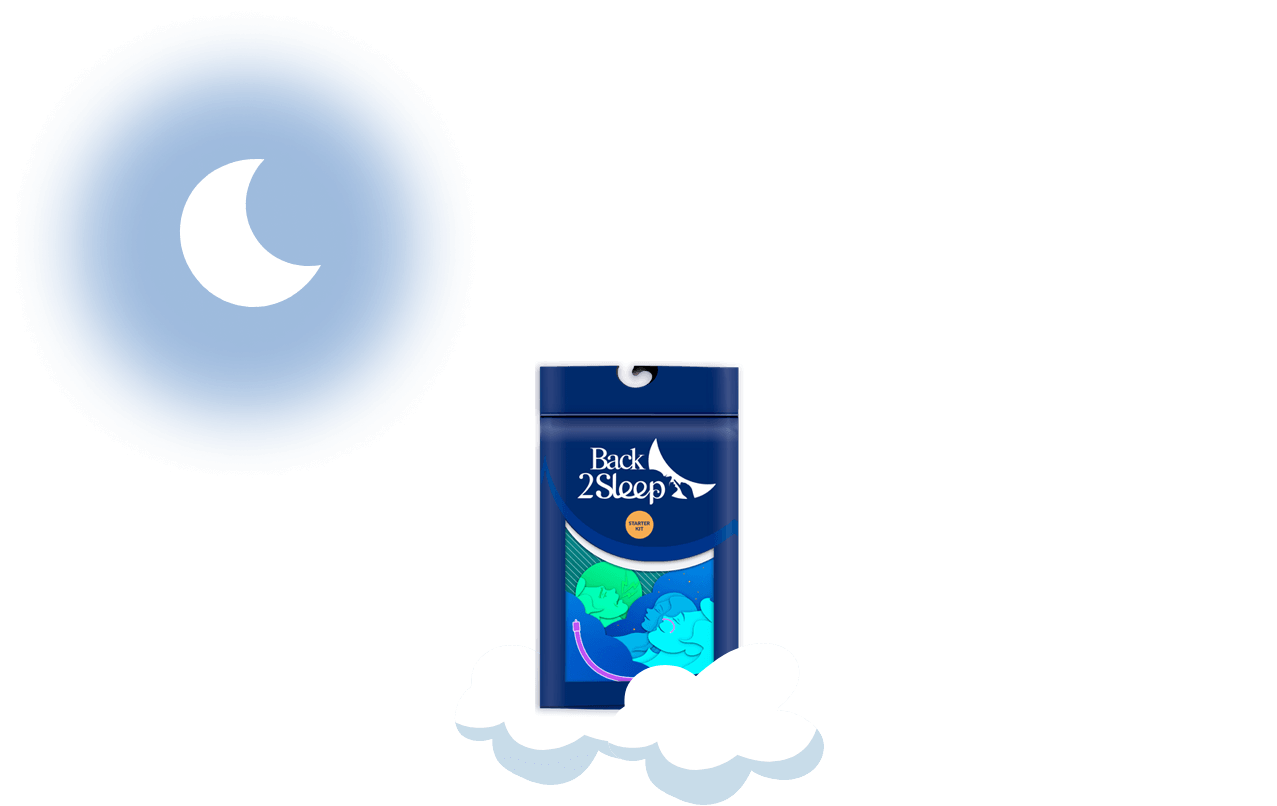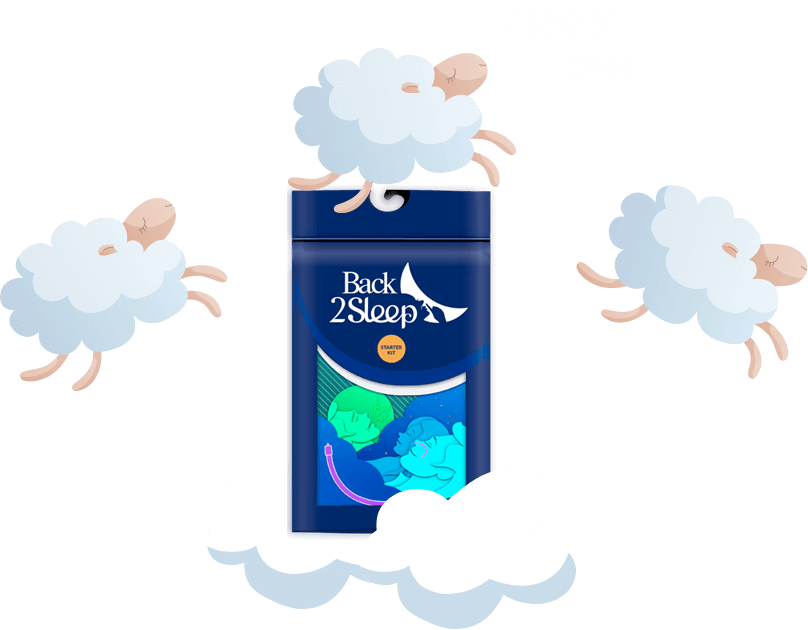Sleep Apnea and Pneumonia: Understanding the Hidden Connection
Scientists reveal how sleep apnea increases pneumonia risk, especially with CPAP therapy, affecting nearly one billion people worldwide - discover safer alternatives like Back2Sleep for effective treatment.
Scientists have known for several years that sleep apnea promotes certain more or less severe pathologies - new studies show that this respiratory disorder is likely to cause respiratory tract infections such as pneumonia, with CPAP users showing 43% infection rates compared to 25% in non-CPAP treatments, making alternatives like the Back2Sleep intranasal orthosis increasingly important for safe and effective sleep apnea management without bacterial contamination risks.

High Risk of Pneumonia in Apneics
Sleep apnea affects nearly one billion people worldwide. And the trend should be up. The phenomena of obesity, overweight and aging of the constantly increasing population will have the effect of increasing the number of people suffering from sleep apnea. One of the symptoms of sleep apnea is often great fatigue during the day, or even true daytime drowsiness.
Recent studies indicate that sleep apnea promotes pneumonia.
Scientific teams have followed thousands of patients for several years. Some of them suffered from sleep apnea while others had no sleep problems. The results show that people with apnea are more vulnerable to respiratory tract infections. The rate of pneumonia was higher in patients with sleep apnea than the others. Sleep apnea would therefore increase the risk of pneumonia.
Learn About Sleep ApneaSleep Apnea Treatment Options
Several therapies are currently available in the treatment of sleep apnea. Often affecting overweight and obese people, regular physical activity is often the first advice doctors give to their patients.
Physical Activity
Regular exercise is often the first recommendation, especially for overweight and obese patients, helping reduce symptoms naturally.
Surgical Interventions
Upper airway surgeries are prescribed in more severe cases to permanently address structural obstructions.
CPAP Therapy
Continuous Positive Airway Pressure remains the most widespread treatment, though it carries infection risks.
Back2Sleep Solution
Innovative intranasal orthosis providing effective treatment without bacterial contamination risks associated with CPAP.

In more severe cases of sleep apnea, upper airway surgeries are prescribed. But it is the device that remains the most widespread treatment. Its effectiveness allows the symptoms to decrease significantly or even disappear completely. Continuous Positive Airway Pressure (CPAP) is considered the best way to overcome sleep apnea.
In most cases, this treatment allows people who follow it to reduce their sleep apnea. Within weeks, daytime fatigue and migraines become bad memories.
However, while the effectiveness of CPAP is indisputable, this therapy is considered to be the main cause of the high rates of pneumonia in apneic patients.
Continuous Positive Airway Pressure: Treatment for Lung Infections
⚠️ Critical Finding: Among apneic patients treated with CPAP, 43% developed an airway infection, while the rate of pneumonia in people not using CPAP did not exceed 25%.
In addition to showing that sleep apnea promotes lung infections, certain results of several studies seem to indicate that people followed by continuous positive pressure (PPC) develop pneumonia more often than patients with apnea treated with other methods.
Among apneic patients treated with CPAP, 43% developed an airway infection, while the rate of pneumonia in people not using CPAP did not exceed 25%. In addition, studies show that the use of CPAP heated humidifiers further increases the risk of lung infection.

Understanding CPAP Bacterial Contamination
To explain this phenomenon, the scientists argue that this fairly invasive treatment can lead to bacterial colonies in the different parts of the device that constitute it. Tubes and masks are favorable environments (especially when the air is heated and humidified) for the multiplication of bacteria. While some of them pose no health hazard, pathogens may swarm on the surfaces of the machine.
Bacterial Growth - Tubes and masks create favorable environments for bacteria multiplication, especially with heated humidification
Direct Transmission - During nightly use, bacterial colonies pass into the patient's respiratory tract causing infections
Hygiene Correlation - Clear correlation between high pneumonia rates and lack of proper CPAP maintenance
By using CPAP during sleep during the night, these colonies of microbes pass into the patient's respiratory tract and thus cause infections. Other studies have also shown a clear correlation between the high rate of pneumonia and a lack of maintenance of the device.
Essential CPAP Hygiene and Prevention Measures
It is therefore essential to emphasize the hygiene of the constituents of the PCP. Tubes, reservoirs and masks should be thoroughly cleaned with the aim of disinfecting all surfaces that may inhabit microorganisms.
Daily Cleaning
Thoroughly clean tubes, reservoirs and masks daily to disinfect all surfaces
Regular Replacement
Replace CPAP components according to manufacturer guidelines to prevent buildup
Proper Drying
Ensure all components are completely dry before use to prevent bacterial growth
Consider Alternatives
Explore safer options like Back2Sleep that don't require complex maintenance
Pneumonia can be serious, especially in apneic people who are overweight and suffer from cardiovascular disorders. It is therefore imperative to carry out educational campaigns in order to make patients treated with CPAP aware of the hygiene of their machine. This will drastically reduce the risk of lung infection.
Find Treatment OptionsBack2Sleep: The Safer Alternative to CPAP
💡 The Back2Sleep intranasal orthosis eliminates the bacterial contamination risks associated with CPAP therapy. No tubes, no masks, no water reservoirs - just a simple, hygienic solution that maintains open airways naturally.

Zero Bacterial Risk - No complex equipment means no bacterial colonization possibilities
Simple Maintenance - Easy to clean with no tubes or water reservoirs required
Effective Treatment - Maintains open airways without infection complications
Related Health Conditions and Sleep Apnea
Learn more about sleep apnea's connection to other health conditions:
| Condition | Connection to Sleep Apnea | Risk Level |
|---|---|---|
| Asthma and Sleep Apnea | Respiratory inflammation increases apnea severity | High |
| Pulmonary Arterial Hypertension | Increased pressure affects breathing patterns | Severe |
| Sleep Apnea and Cancer Risk | Oxygen deprivation may increase cancer risk | Moderate |
| Sleep Apnea and Stroke Risk | Cardiovascular strain increases stroke risk | High |
| Sleep Apnea and Depression Risk | Sleep disruption affects mental health | Moderate |
| Diabetes and Sleep Apnea | Metabolic dysfunction connection | High |
| Allergy and Sleep Apnea | Nasal obstruction worsens apnea | Moderate |
| Covid-19 and Sleep Apnea | Increased vulnerability to respiratory infections | Severe |
Frequently Asked Questions
CPAP devices create favorable environments for bacterial growth in tubes and masks, especially with heated humidification. Studies show 43% of CPAP users develop airway infections compared to only 25% with other treatments. The bacteria colonize the equipment and pass directly into the respiratory tract during use.
Pneumonia can be particularly serious in apneic people who are overweight and suffer from cardiovascular disorders. The combination of compromised breathing from apnea and lung infection creates dangerous health complications.
While thorough daily cleaning of tubes, reservoirs and masks can reduce risk, studies show a clear correlation between pneumonia rates and CPAP maintenance challenges. Even with proper hygiene, the complex equipment creates ongoing contamination risks.
Yes, the Back2Sleep intranasal orthosis eliminates bacterial contamination risks since it doesn't use tubes, masks, or water reservoirs. Its simple design requires minimal maintenance while providing effective airway support without creating environments for bacterial growth.
Protect Yourself from Pneumonia Risk
Choose a safer sleep apnea solution without bacterial contamination risks. Back2Sleep provides effective treatment without complex maintenance.
Order Back2Sleep TodayLearn more: Contact Support | Latest Research | About Us








